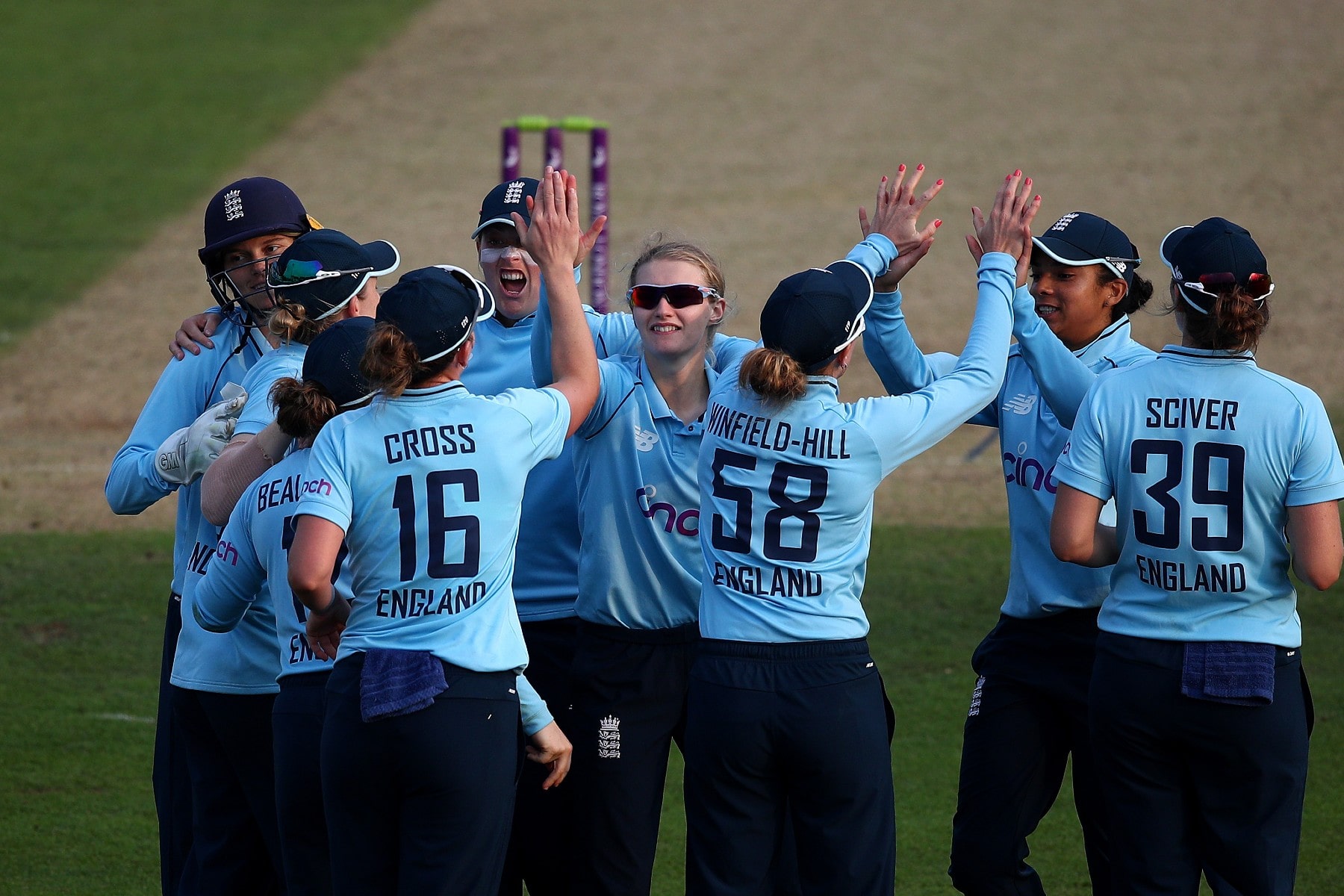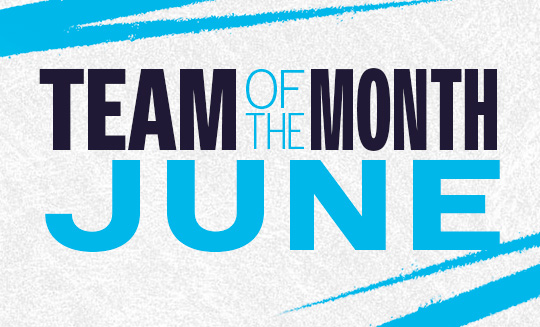PCA PRESS RELEASE
Need for more equitable approach highlighted in issue 29 of Beyond the Boundaries.
To see more articles, click here
Documenting that there has been significant advances made in women’s cricket in recent years, is like saying that vaccine science has come on a bit of late.
Where necessity may have powered the worldwide development of one, it’s an enhanced collective sense of equitability that is giving wings to the other. “I’ve always said that women’s cricket affords the biggest opportunity for the sport to grow in this country”. This is the opinion of PCA Chief Executive Rob Lynch. He’s speaking from the PCA’s home at the Kia Oval, but the figurehead of the players’ representative body doesn’t want his ‘opinion’ to sway any ensuing argument to the contrary. He wants it to be an argument grounded in fact. “The success of The Hundred is evidence of how that can work to grow the sport. It also increased the players’ profiles. Saw them play in front of big crowds. Attracting new people to the sport. To watch new stars,” he continued. “My heroes, when growing up in New Zealand were the likes of Martin Crowe and Sir Richard Hadlee. Now, as the father of two daughters, taking them along to see the likes of Heather Knight, Tammy Beaumont and Issy Wong, these will likely prove the inspiration for a new generation of female fans and players entering the sport.”
In terms of these leaps forward in the women’s game – from the PCA’s perspective – firstly, there has been the establishing of England Central Contracts for key players, with this now being followed up by the new regional domestic structure, in place to provide a clearer and more defined pathway to the international game. One that is available to a larger, better-defined group of players. There were 17 centrally contracted England players in 2021, plus 41 that were regionally contracted on a semi-professional footing. All serving to develop an ever-burgeoning and increasingly sophisticated professional game.
According to Lynch, this progress made within the women’s game shouldn’t be underestimated. “It’s important that we keep striving for more,” he said. “But ensuring that professional cricket is both aspirational for girls playing the recreational game, and also a viable career option for women. And one that is well rewarded. This has to be the premise that underpins any future plan.”
Underlining the point, over the past year the PCA has carried out a player survey identifying the issues that are deemed the most important to those playing the game. In summing that up, Lynch was once again upbeat. “Over all the players feel positive about the future of the women’s game and recognise the investment made by the ECB. Particularly its support in developing the playing level that sits beneath representing England,” stated Lynch. “The players went so far as valuing these structural changes over and above their own wants and requirements as England players.”
Initially an internal document, but so focused was the survey in its findings, that the PCA submitted it as a ‘white paper’ to ECB. “The overarching view from the survey was a desire for gender parity,” said PCA’s Head of Player Rights & Women’s Cricket, Emma Reid, another member of the representative body’s leadership team. “A desire to ensure men and women are treated equitably, in terms of employment conditions and opportunity, across both the international and domestic levels. We are keen to work collaboratively with the ECB towards narrowing the gender gap and providing more professional opportunities for more female players.”
In the round, the submitted paper served as a plan for the women’s professional game at international and domestic level over the next 10 years. And with the latest draft placed before the ECB in May, it has served to spark the desire for a series of meetings. Discussing the actions required, particularly in the short term, to move forward both the domestic and international structure. “I’m almost embarrassed to say it, but Australia – with regards women’s cricket – is probably three or four years ahead of us,” added Lynch. “They have consistently been progressive with their promotion of the women’s game and its heroes. I think we are now in what amounts to year one of a five-year-plan of our own.”
The paper also identified ten key areas where the England women’s contracting structure differs from the men’s contracts and as such, needed bringing closer together. “These findings were mostly well-received by the ECB but some came as a bit of a surprise,” proffered Reid. “But it also succeeded in pushing the understanding of how far behind we are in some areas. From our perspective it is important for us to continue to push on player remuneration as well as lobbying for a number of principles and structures around basic working conditions. Things that are long-since established within the men’s game now need be replicated in the women’s game. When you put it all into one paper it becomes quite powerful,” Reid continued.
"We had unprecedented audiences, both in terms of broadcast and in ground. And the part the women played in that needs to be reflected in the remuneration. Equal prize money makes a statement."
ROB LYNCH, PCA CHIEF EXECUTIVE
Wider findings bore the above sentiment out. With a massive 80 per cent of England players not believing that the ECB supported them equally when compared to their male colleagues, it’s a fairly damning response from the game’s shop floor. “We are now working closely with the ECB to map out the narrowing of the gender equity gap, across three major areas,” said Reid. “Those being England women, domestic women and The Hundred environments.”
The Fairer Future paper also identified where the game needs to specifically support its female professionals. “The survey results indicated that players had delayed starting a family, or didn’t feel supported in starting a family,” said Reid, speaking of the findings. “We want to work with the ECB on how we can better support players in starting a family and having a baby. Working in conjunction with their career as professional athletes.”
By contrast, Australia, New Zealand and Pakistan have all released details of the provisions they have in place to support all players choosing to parenthood. These include maternity leave, pay, and contractual support for the player’s return to play. This isn’t the case in England and Wales. “At this point the ECB are working on devising a family policy for overseas tours and at home by using the men’s policy as the benchmark,” said Reid. “As well as looking to agree a parental policy which is fit for purpose and provides support for players wishing to start a family.
There are other bumps to iron out on the home front. “It has also been presented to the ECB that that the structures and principles from the England men’s contracting system should be aligned to the women’s game,” outlined Lynch, before adding, “Whilst this is not the end goal in achieving parity, we believe that it begins to set a framework which is robust and prevents year on year changes to salaries, match fees and win bonuses happening.”
The aspiration for 2022 and beyond is for domestic female players to be provided with the opportunity to be full-time cricketers. Operating at a salary level that doesn’t require a second job. Supported by a lower tier of summer contracts, rookie contracts and university contracts. From November 2022 the England central contracts and regional domestic contracts will align. “We will be pushing for a remuneration budget for regional cricket so salaries are not fixed but can be determined by regions, creating a market for players,” said Lynch. “And whilst the domestic structure is in its infancy, our consultation with the players highlighted some concerning issues relating to an inability to undertake other work when the contracts are on a part-time salary. A lack of London weighting being one of them. Plus the consequences of not having one ‘home’ base. This is leading to sporadic schedules and inconsistent facilities and a feeling of transience with players unsure of where they should live, plus the additional expense of travel to ‘home venues’ which could be miles from where they live. This also had an impact on players ability to undertake other work.”
Highlighting these ‘real world’ challenges has ushered in a number of additional, equally progressive steps. They include an extra professional contract per region, as well as London weighting agreed for players at Sunrisers and SE Stars.
Turning full circle, the impact of The Hundred competition in its first year cannot be underestimated. “It definitely pushed women’s cricket forward,” said Lynch. “We had unprecedented audiences, both in terms of broadcast and in ground. And the part the women played in that needs to be reflected in the remuneration. Equal prize money makes a statement,” he said. “But it will be a shift northwards in salaries that really recognises and reflects the value to the game of the competition. Showing the real strides made towards gender equity. Given the fact that, for the first time, men and women are literally competing on the same stage.”
This article was originally published in the PCA’s membership magazine Beyond the Boundaries, in November 2021. You can read the latest issue below or click here to access all previous issues.













